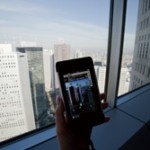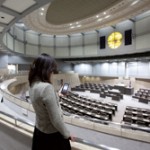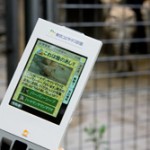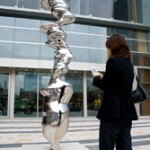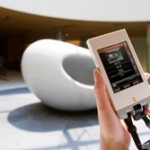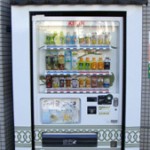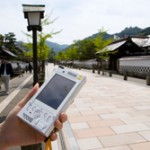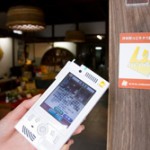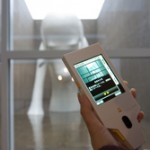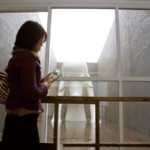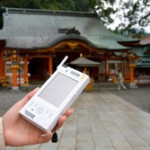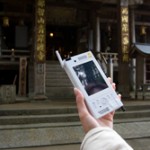Tokyo Ubiquitous Technology Project
Tokyo Metropolitan Government Office Ubiquitous Guide (Tokyo Metropolitan Government)
The Tokyo Metropolitan Government renewed its “Observatory Ubiquitous Guide” launched in April 2009 into the “Tokyo Metropolitan Government Building Ubiquitous Guide” by adding the “Tokyo Metropolitan Assembly Building Tour” which guides visitors to the Tokyo Metropolitan Assembly Building and lends Ubiquitous Communicator (UC) to visitors to the Tokyo Metropolitan Government Buildings. As descriptions on sights from the observatory and the Tokyo Metropolitan Assembly Building allow visitors to learn more about unknown aspects of “Tokyo,” this service has proved very popular among both domestic and international visitors.
Ueno Onshi Zoological Garden Ubiquitous Guide Service
Ueno Onshi Zoological Garden introduces the guidance system for general visitors. Various types of information on animals are provided with radio wave markers installed in 20 locations and IC tags installed in 120 locations around the premises. Introduction by General Director Komiya and video of rarely seen animal behavior are popular.
Ubiquitous Art TourⓇ (Tokyo Midtown)
Ubiquitous Art Tour, a service to guide visitors to more than 20 works of arts and design on the premises of Tokyo Midtown. About 500 infrared and radio ubiquitous markers are placed indoors and outdoors on the premises. Ubiquitous Communicator (UC) terminal held by the visitor receives ucode emitted by these markers and guides the visitor to the works of arts, and supply the content such as the explanation, how the work was created, and the interview of the creators. There are seven tour courses and visitors are guided to the works of arts in the selected course one by one. The supplied contents are available in five languages, Chinese, English, French, Japanese and Korean.
Aomono Yokocho Fifty-seven Stations of Tokaido Ubiquitous Guide Project
The Tokaido Road connects Nihonbashi in Tokyo to Kyoto and Osaka. This project aims for the creation of “Future Post Station Towns” which use the best features and conveniences of each post station by transmitting information using ubiquitous ID technology to connect people as the ancient Tokaido Road once did when people traveled by foot.
Ubi-navi (Tsuwano)
Tsuwano town, Shimane Prefecture was the first in the country to introduce a ubiquitous sightseeing guide system in 2003 to provide tourists with sightseeing information on restaurants and facilities for tourists, etc. Sightseeing information on central Tsuwano town for indoors as well as outdoors is also provided in this fiscal year with the concept of creating “All of Tsuwano a Ubiquitous Art Museum.”
Art Museum Ubiquitous Guide System (Aomori Museum of Art )
“Art Museum Ubiquitous Guide System” service is provided at Aomori Museum of Art. This system is an integration of infrared indoor location management system “SmartLocator®” by NEC and NEC Engineering Corporation and Ubiquitous Communicator (UC). The visitors carry UC lent by the museum to receive ucode transmitted from SmartLocator installed at approximately 70 locations in the museum ceiling to be automatically guided on the route, and to view the content such as explanation of artworks, authors and museum information.
World Heritage Site Kumanokodo Navigation Project (Nachi-Katsuura Town)
Route navigation and other information are provided near Daimonzaka Slope, Kumano Nachi Taisha Shinto Shrine, and Seigantoji Buddhist Temple along “Kumanokodo,” the ancient road selected as World Heritage site, to inform visitors unfamiliar with the area including foreign tourists of available lavatories, historical sites, stores, tourist facilities, “Michi-no-eki,” (rest station along the highway) etc. in multiple languages.
This service uses Ubiquitous Communicators (UC) lent to the visitors and the infrastructure established by the Free Mobility Assistance Project in 2007.
Ubiquitous Tourism “Regional Resources Utilization Project”
(Japan Foundation For Regional Vitalization)
As part of the “e-Regional Resource Utilization Project,” Japan Foundation For Regional Vitalization (commonly called Furusato Foundation) has consolidated information (content) that each local government or tourist area has since FY2008. The Foundation also promotes the establishment of the “Furusato Ubiquitous Common Platform” where multiple local governments cooperate together to share and publish information on common themes such as literature, history, and nature. Thus far, 16 regional associations (comprised of approximately 70 local governments) in various regions in Japan disseminate tourist information using this common platform. This fiscal year, the Foundation is focusing on the dissemination of “timely” information suitable for the current location and time mainly assuming that the user is on a trip, making the best use of state-of-the-art ubiquitous technology.

